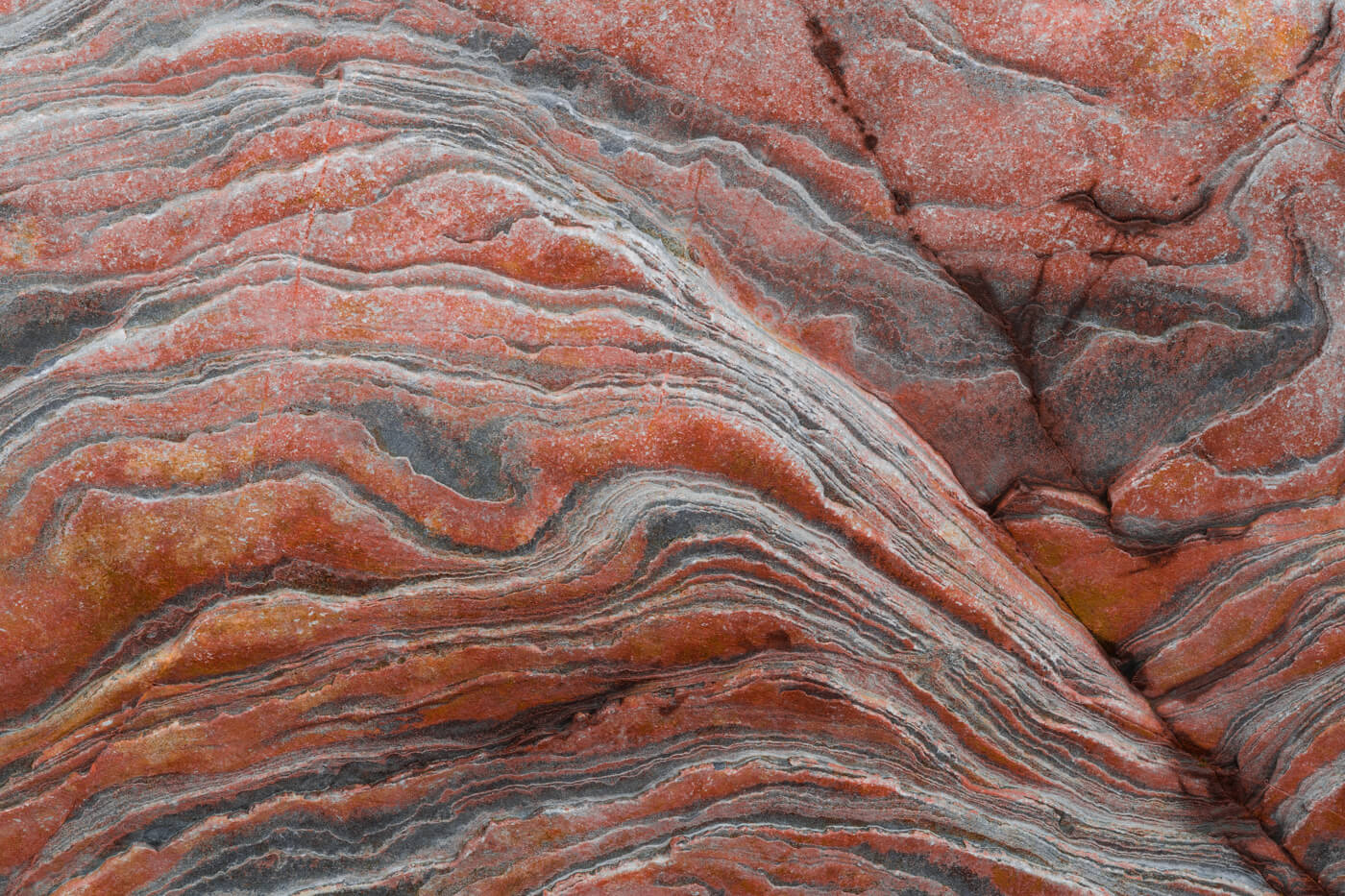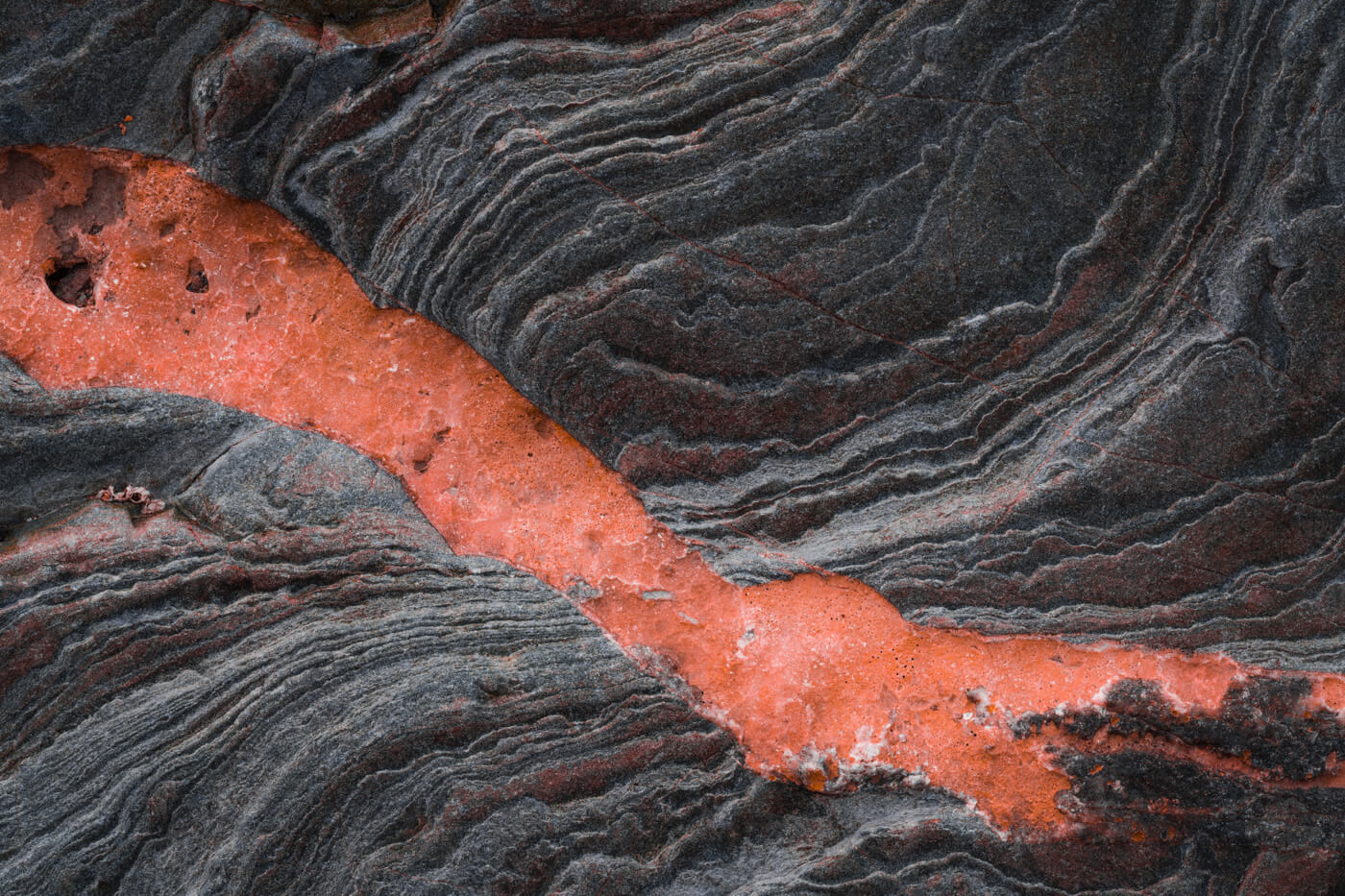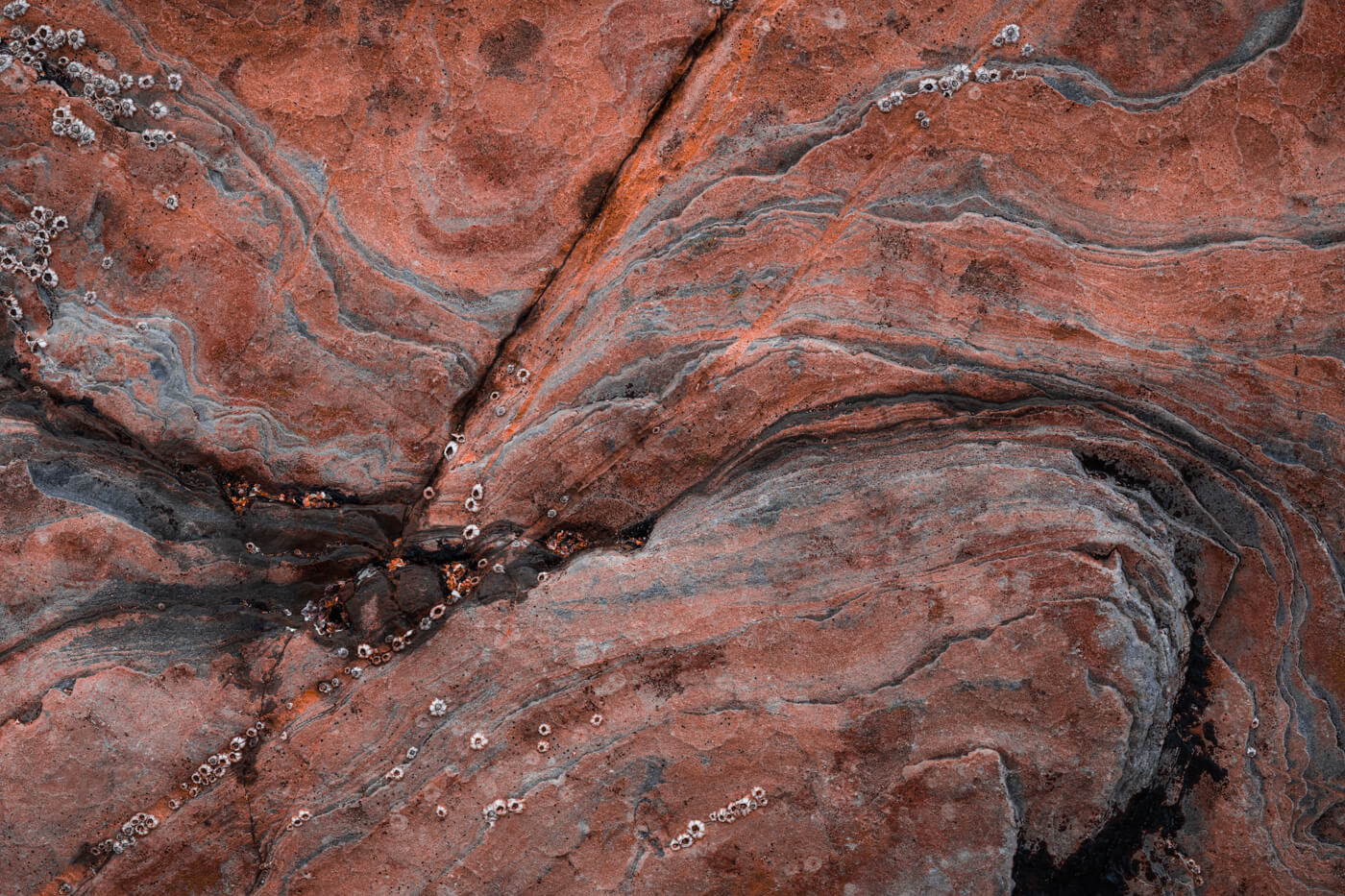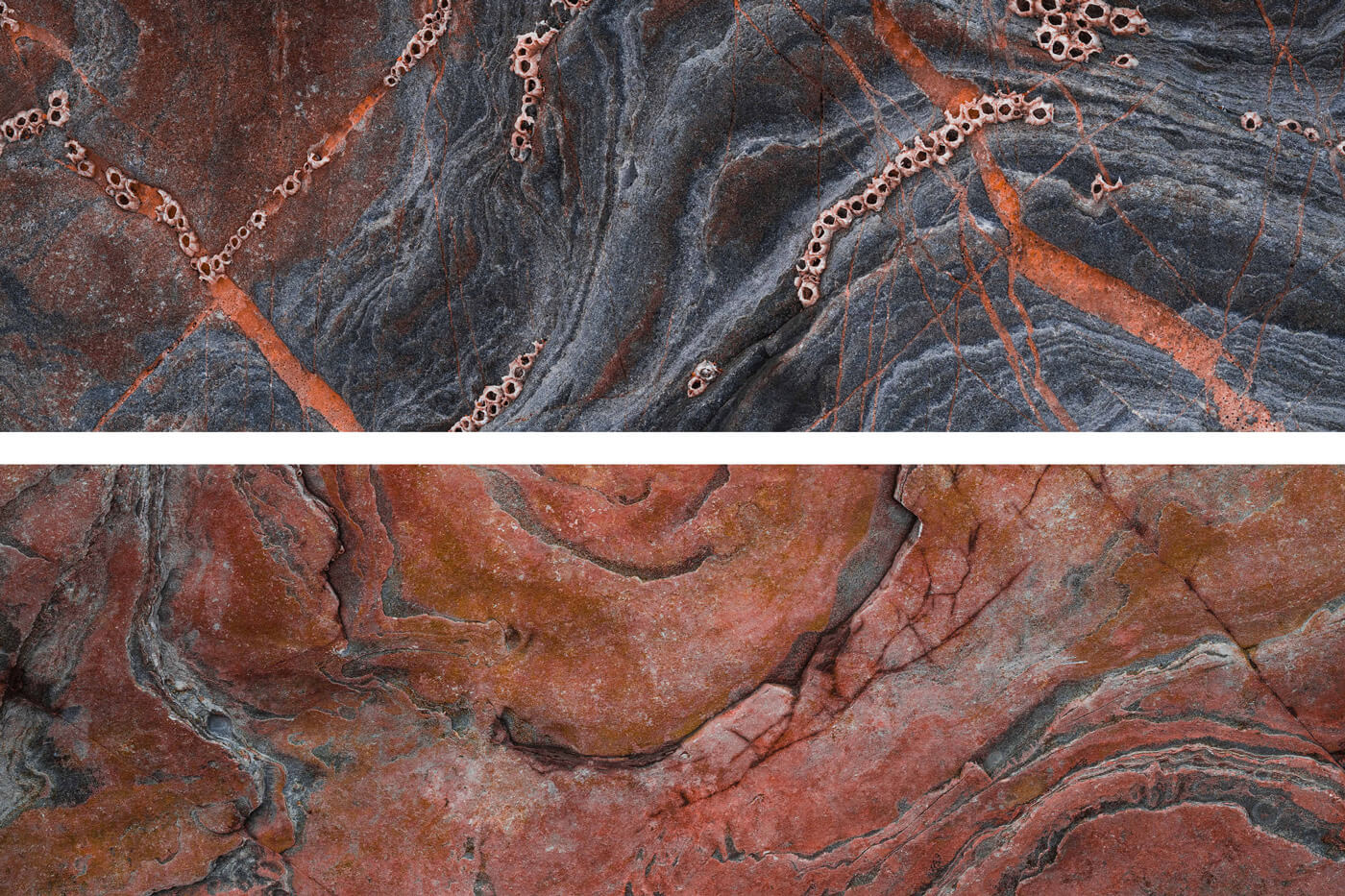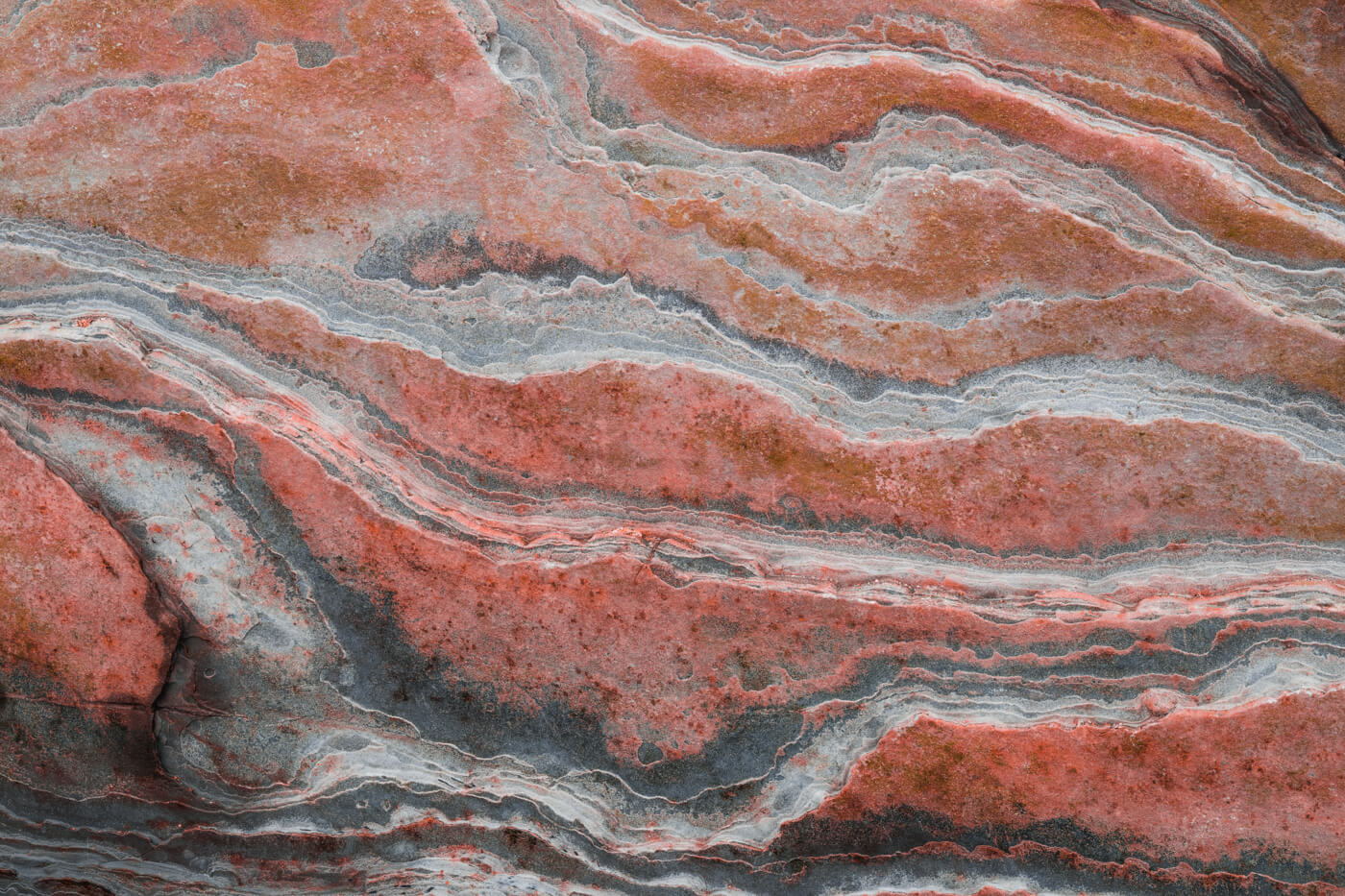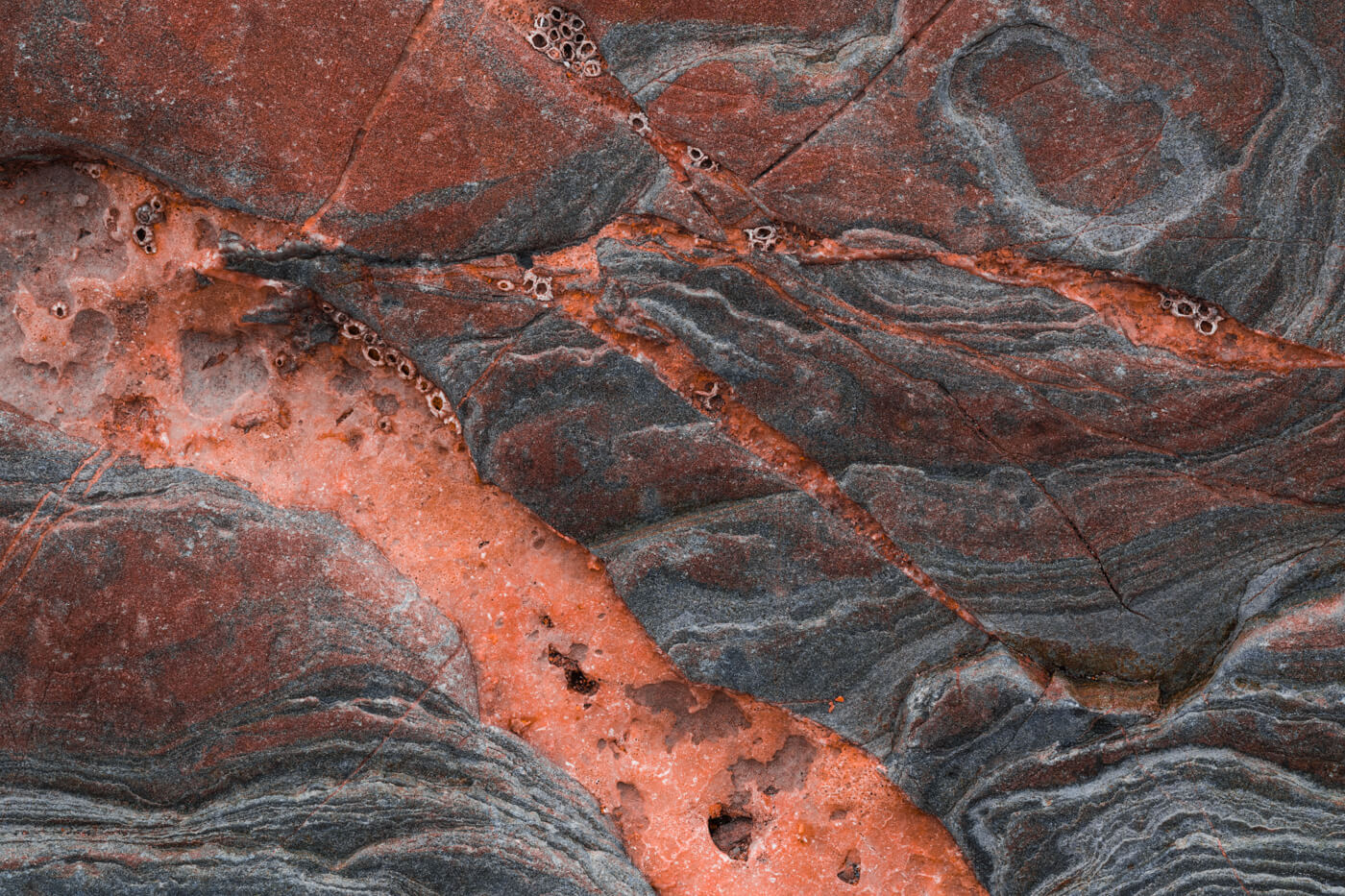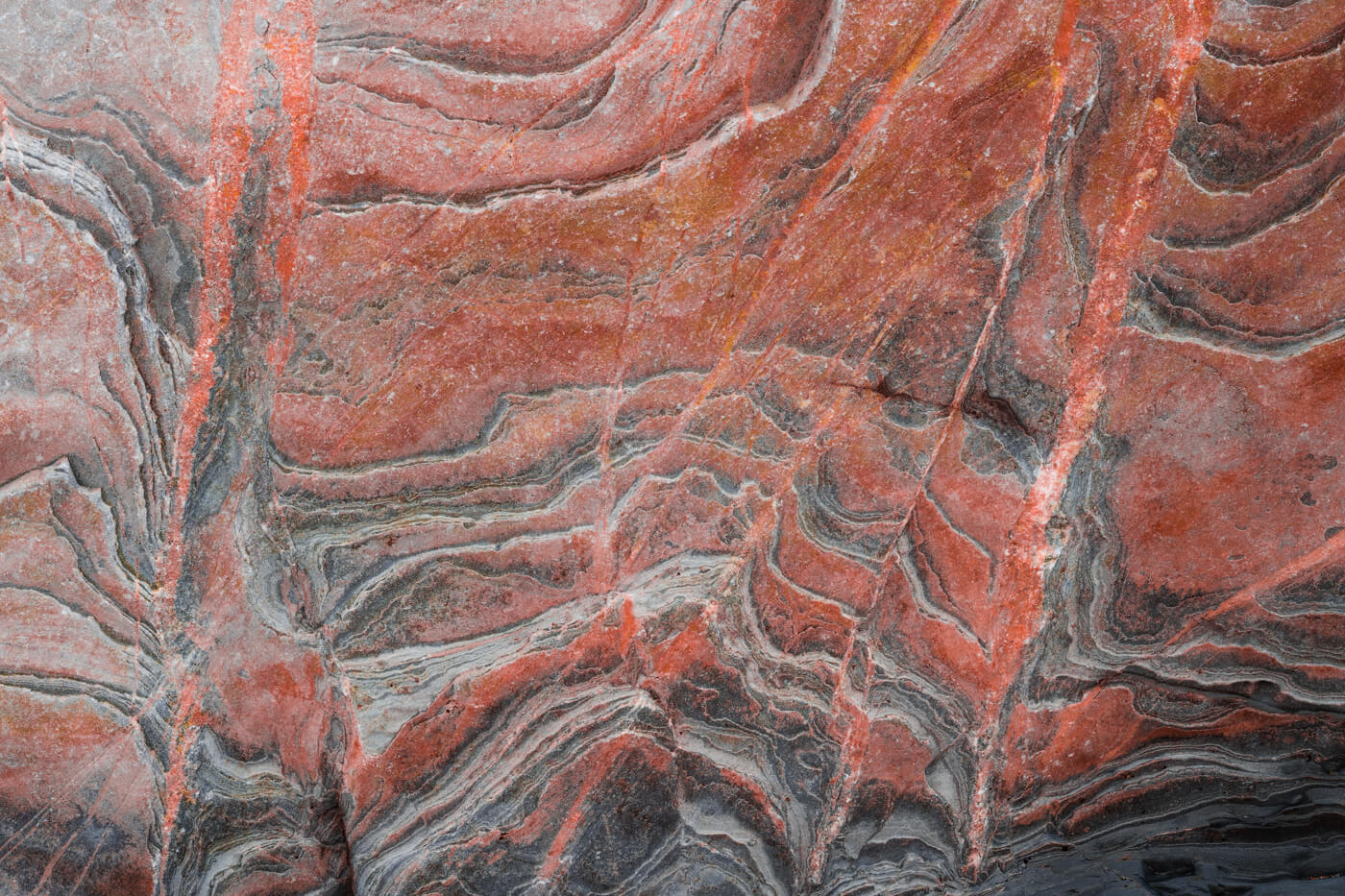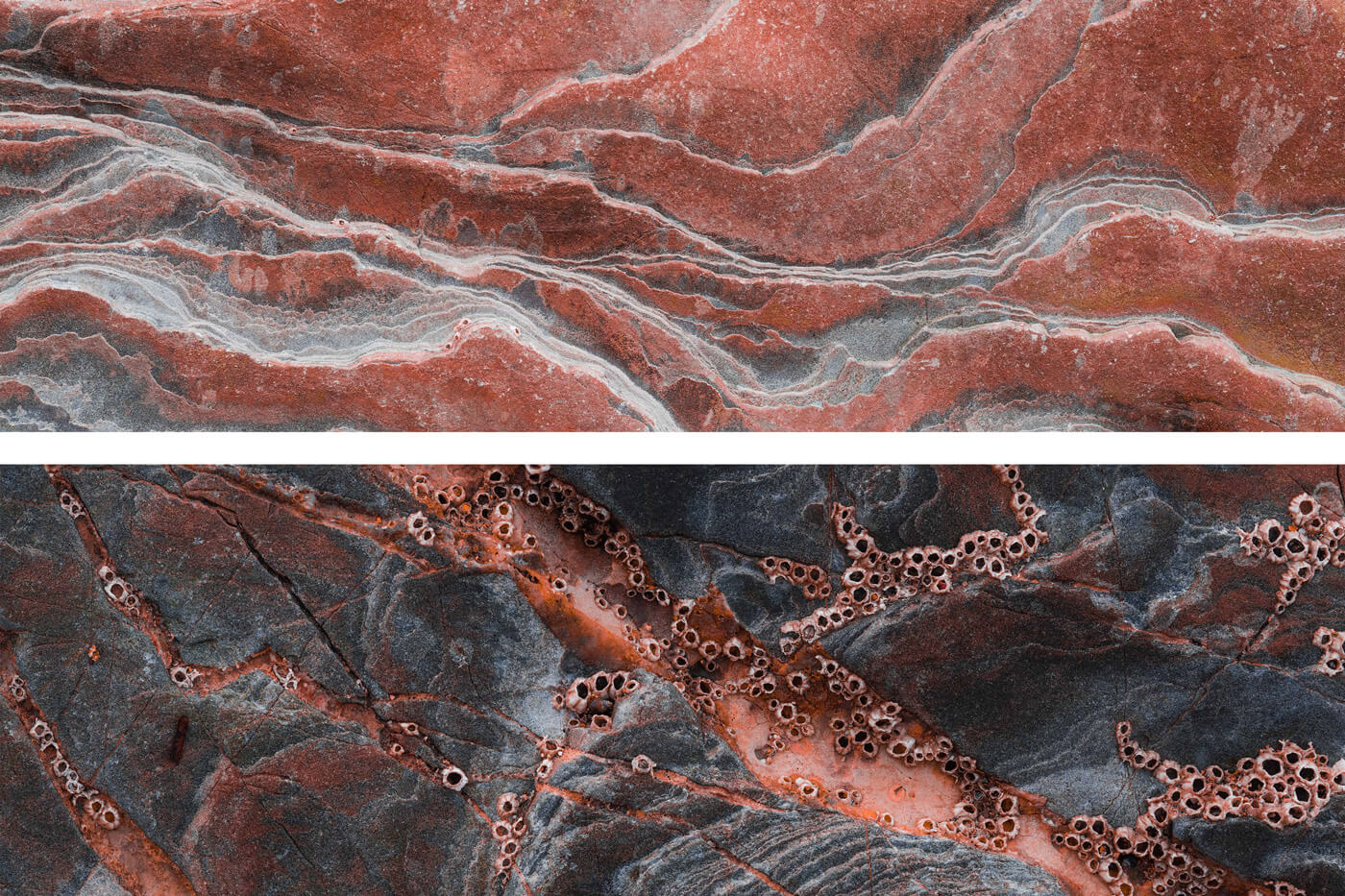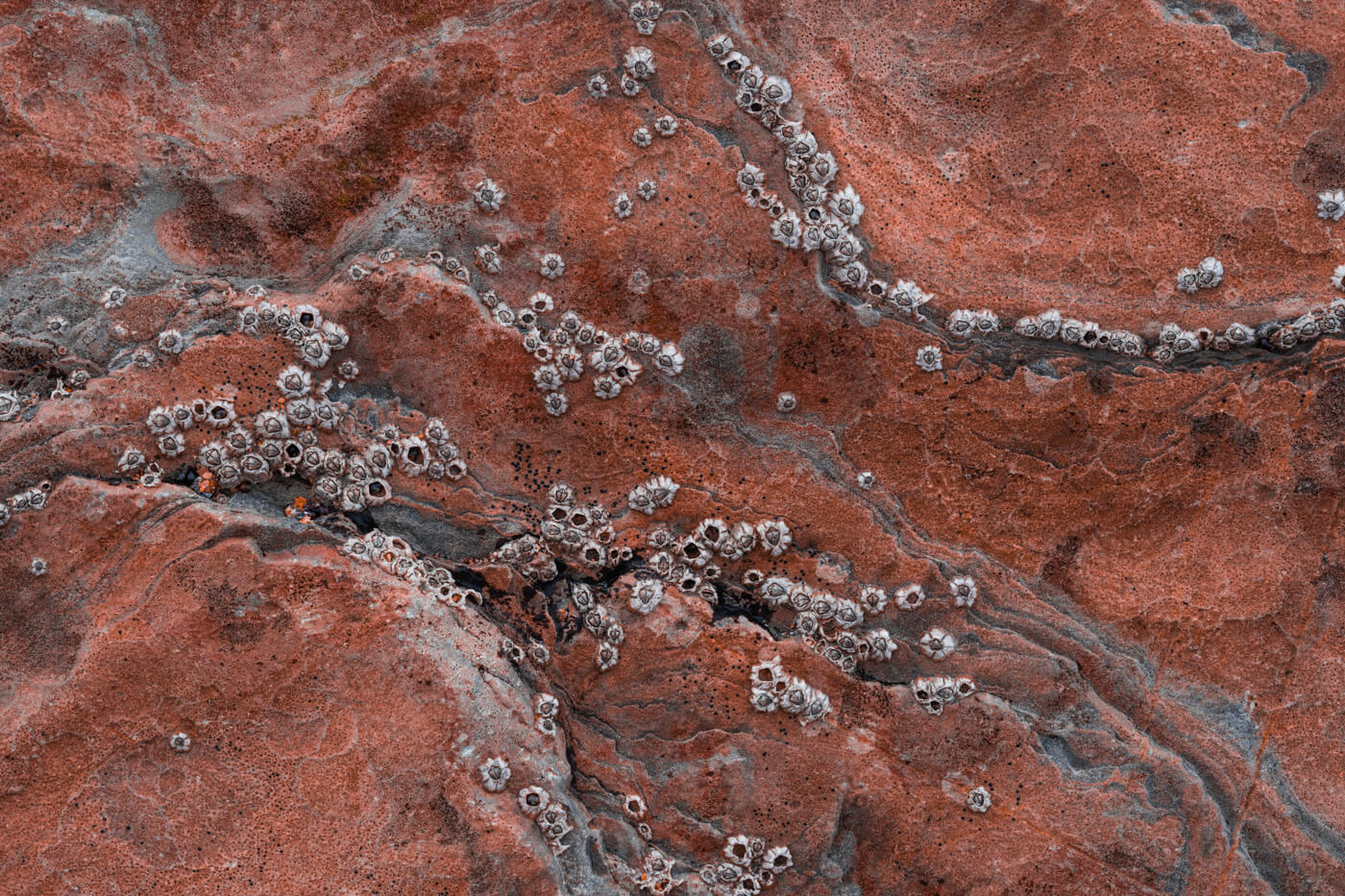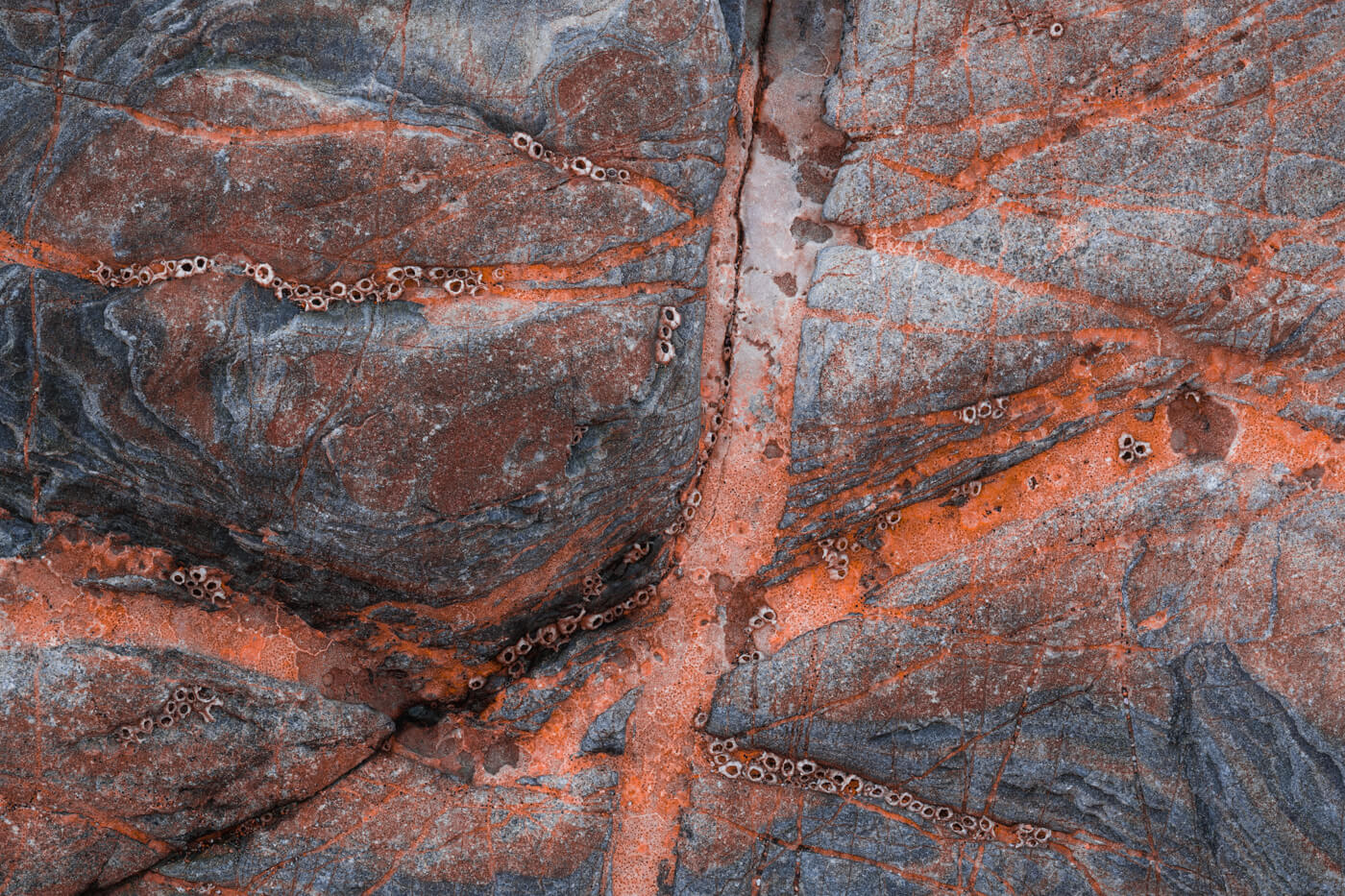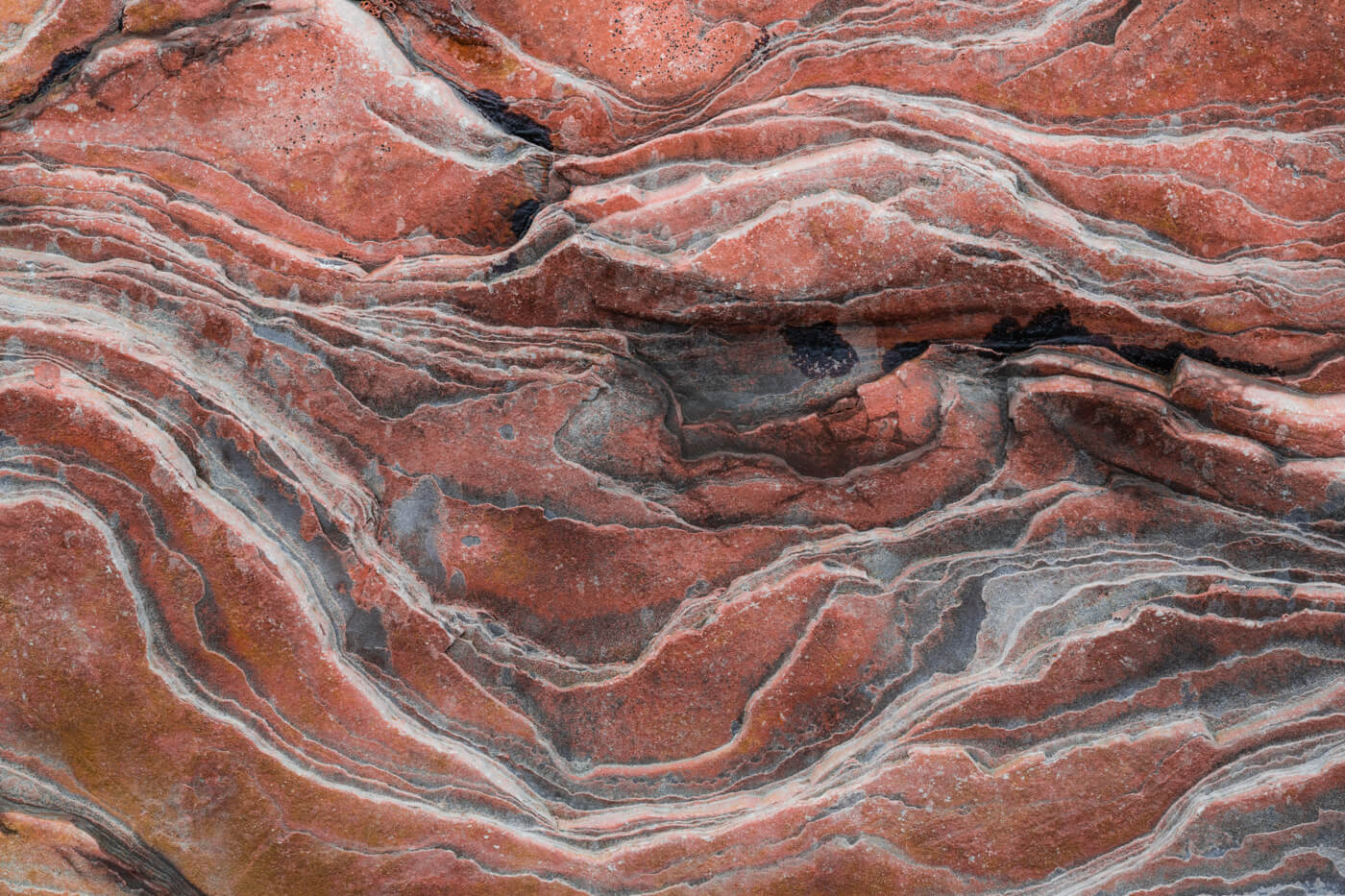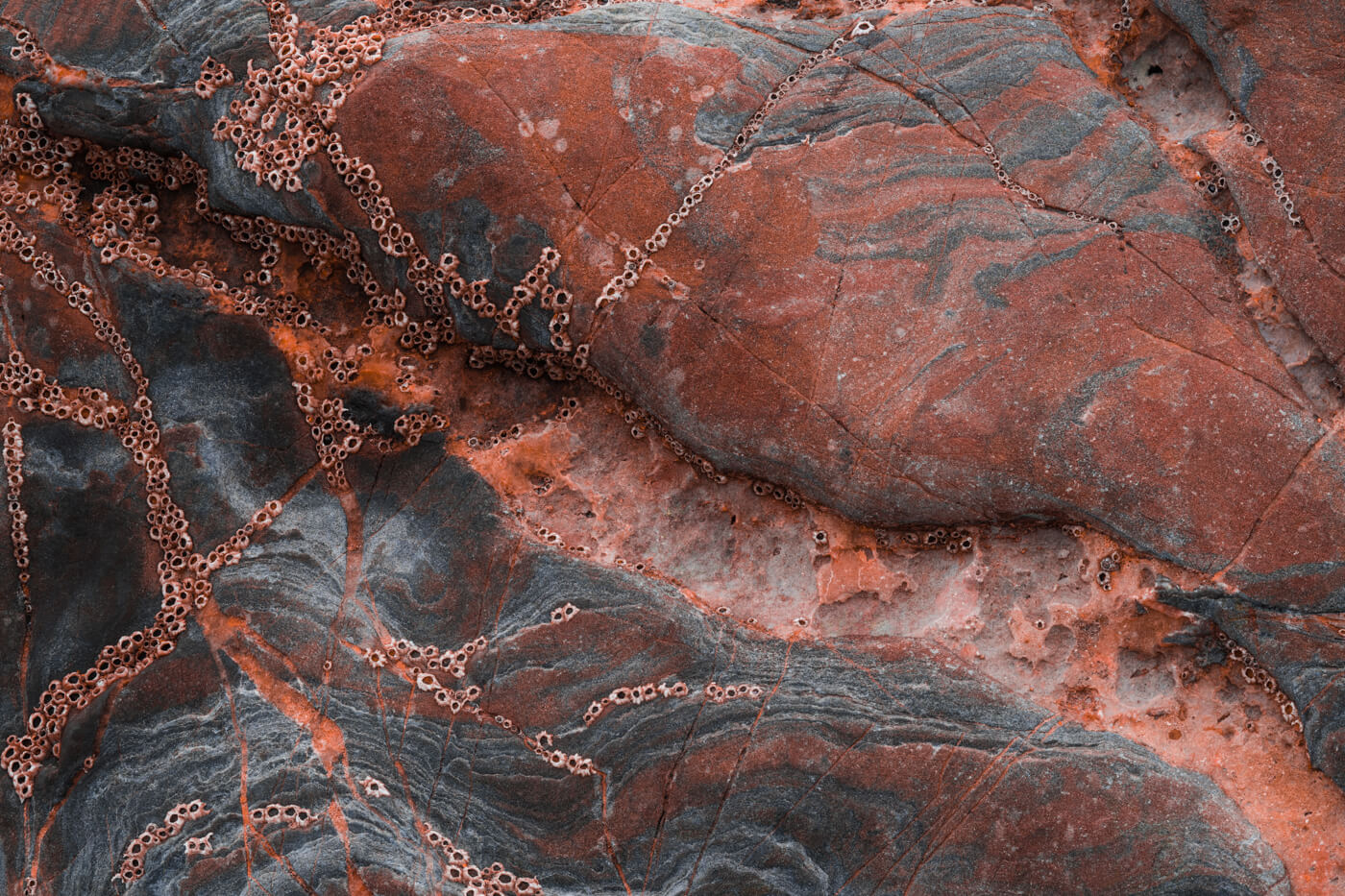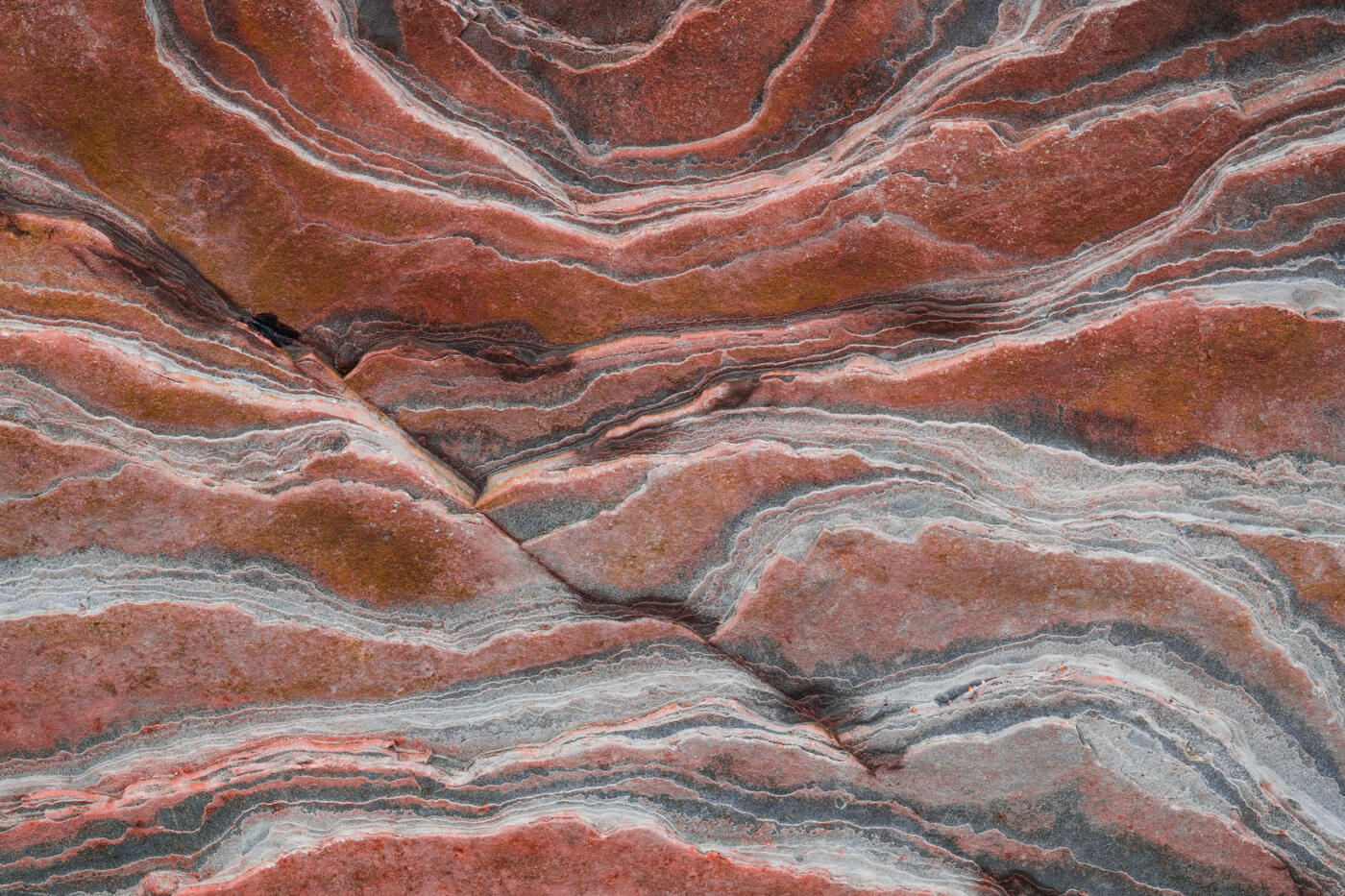Crimson Shell
Flysch formations are prominently found along the northern coast of Spain, particularly in regions like the Basque Country and Asturias. In this area, the rugged coastline offers a unique canvas for these intricate geological wonders.
Flysch stone structures evolve over millions of years through a process that begins with the deposition of fine-grained sediments in a marine environment. Under the influence of geological forces and tectonic activity, these sediments become compacted and lithify into solid rock. Often found near tectonic plate boundaries, these rock layers undergo folding and uplift.
Flysch stone’s defining feature is the alternating layers of different sediment types, reflecting shifts in environmental conditions. Erosion and exhumation eventually bring these intricate formations to the Earth’s surface, showcasing a dynamic geological history of sedimentation, tectonic forces, and changing environments.
In a process of creative reinterpretation, the Flysch structures of Spain’s northern coast undergo a transformation through experimental color-shifting techniques and are re-imagined as close-ups of red crab shells. As the once-subdued earthy tones take on a colorful vibrancy, reminiscent of the crimson hues and intricate textures found in the carapaces of red crabs, an unexpected unity emerges between land and sea.
Blurring the lines between terrestrial geology and the vibrant marine life that inhabits these coastal havens. A colorful metamorphosis.
–
Barrika, France / 2022
Find this series on Behance

